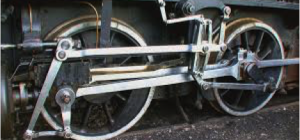One of the primary ways that people differ from the rest of the animal kingdom is through their sophisticated and extensive use of tools. This is something that has characterised even the earliest of human civilization. Looking at antique tools produced by toolmakers from different places, cultures and times provides fascinating insights into the evolution of human society throughout history.
Egyptian
Hieroglyph Carving Tools

The word hieroglyph comes from the Greek words for "holy carving", reflecting the fact that the first discovery of the markings were after the Greeks found Egyptian priests carving these symbols into rock using specialised tools. These tools were likely made of a combination of flint and metal. The flint would have sharp and strong enough to leave clear, linear cuts in the limestone used in most Egyptian masonry. Although it hardens after lengthy exposure, limestone is soft when freshly quarried, making the job of carving these unique glyphs possible.
Measuring Rod

Egyptians measured shorter distances in cubits, which in our modern metric system are each equal to 52.5 centimetres. Examples of rods used to measure cubit intervals have been found in the tomb of Maya - who was Tutankhamen's treasurer - in Saqqara and in the tomb of Kha in Thebes. The cubit is roughly divisible into seven palm widths, and each palm is divisible into four finger widths. These are further subdivided on the rods.
Greek
Most of the incredible technology we credit to the Greeks was developed between about the 5th century BCE and the Roman period. Included among the tools developed by the ancient Greeks are the gear, screw, and catapult. The ancient Greeks also invented bronze casting methods and made innovative use of steam to power certain experimental machines.
Antikythera Machine

This machine is perhaps the most intriguing of all of the ancient Greeks' contributions. When it was initially recovered from the wreck of the Antikythera, its purpose was a mystery. However, we know now that is a primitive analogue computer that was developed to calculate astronomical positions. Similar machines weren't seen until about the 14th century CE, when mechanical astronomical clocks were developed in western Europe.
Roman
Ballista

Known for their prowess on the battlefield, it's perhaps no surprise that the Roman entry here is a weapon. The ballista wasn't unique to the Roman Empire, but the Romans were the first to place it on a wheeled cart for better battlefield mobility. Historians have confirmed that these ferocious giant crossbows were used to pick off enemy leaders from afar. A specific account of this comes from the battle of Tacitus around 83 CE.
Chinese
Compass

Among the many contributions to technology made by the ancient Chinese, one of the most incredible is the compass. Around 100 CE, the Chinese - seemingly by mistake - discovered that a metal spoon could be somewhat magnetized by contact with lodestone, and so the first north-south pointing compasses were created. The "bowl" of the spoon would be placed on the centre of the lodestone surface, and the handle would point south.







